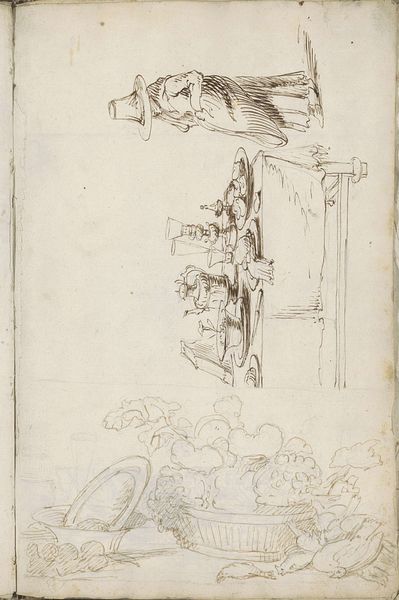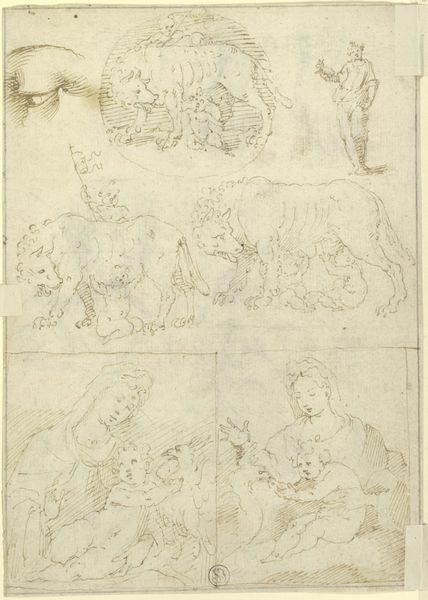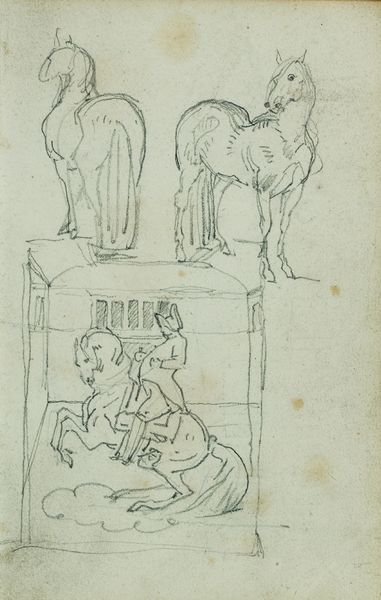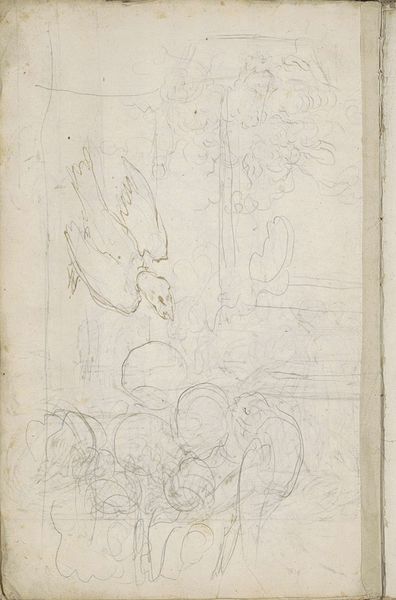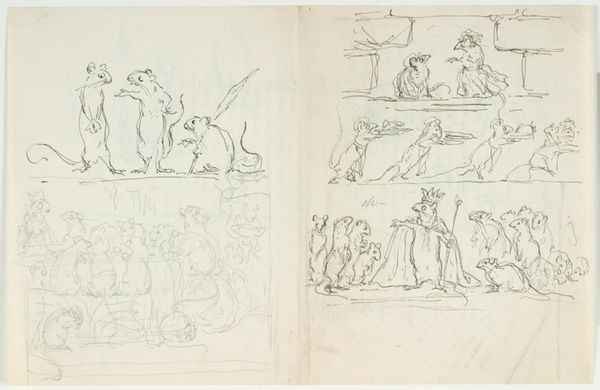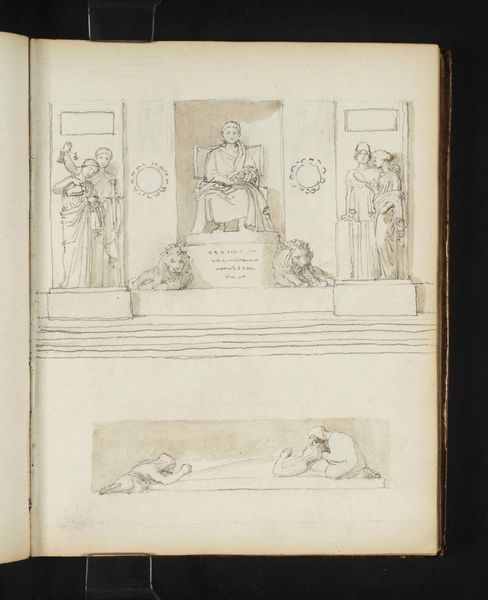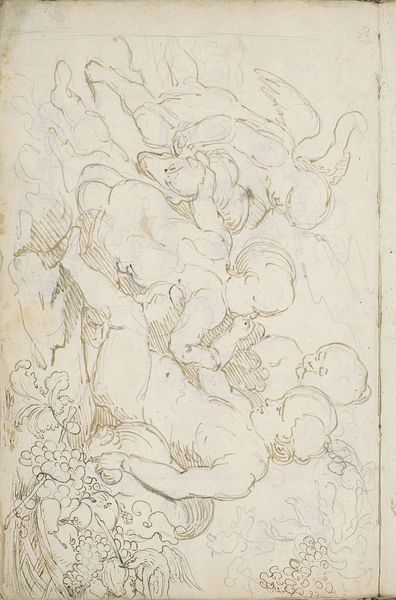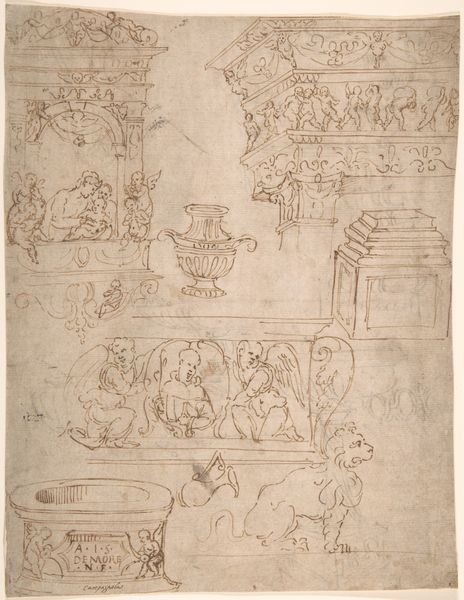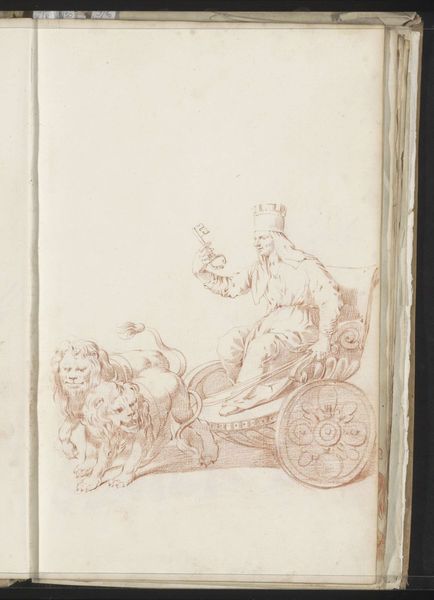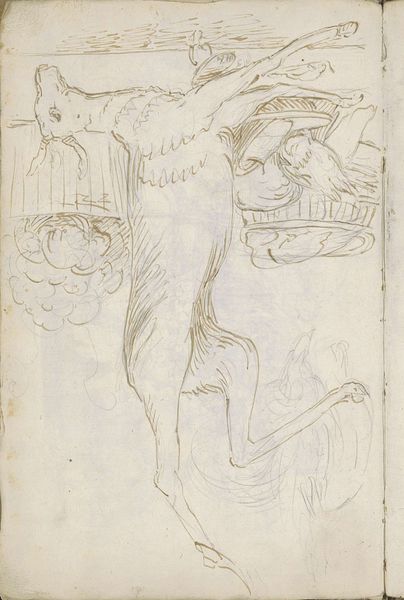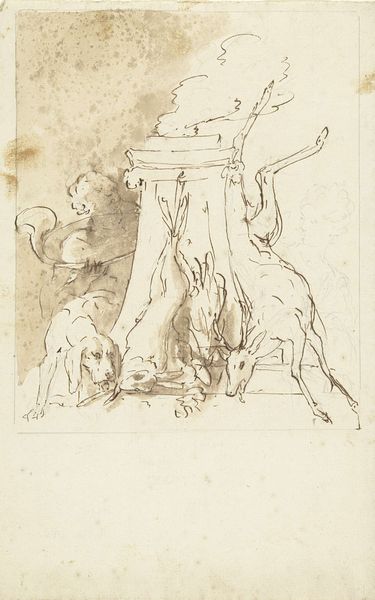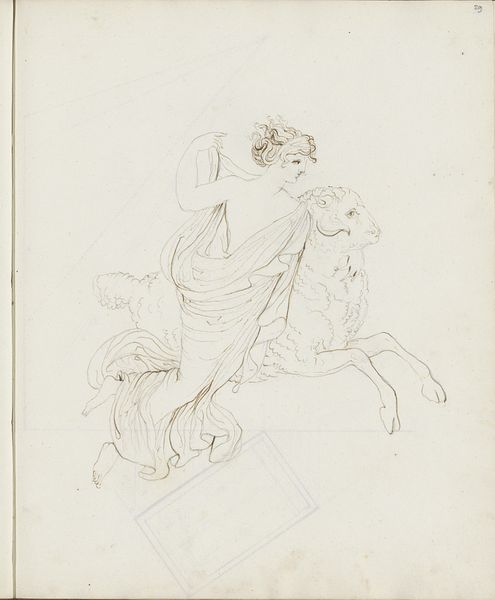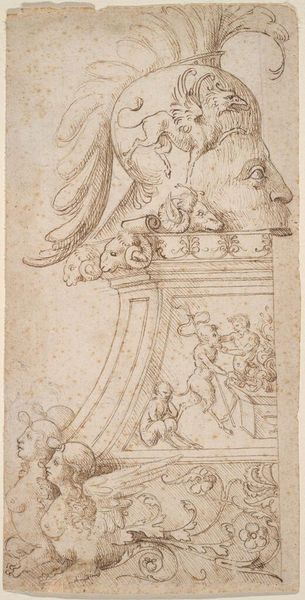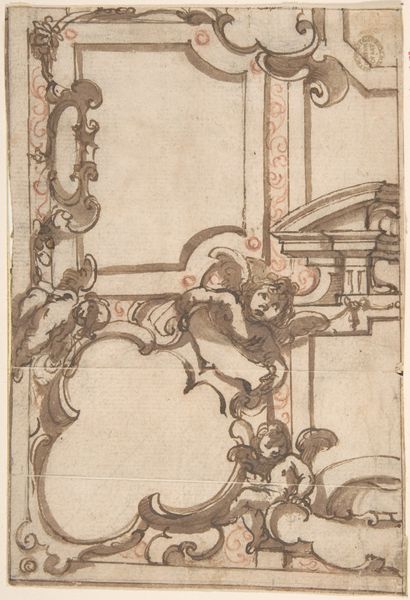
drawing, ink
#
drawing
#
baroque
#
animal
#
dog
#
ink
Copyright: Rijks Museum: Open Domain
Editor: Here we have *Twee dierstukken* by Paul de Vos, made sometime between 1605 and 1678, a drawing in ink. The composition is divided into two scenes, both seemingly capturing animals amidst the remnants of a feast. I’m particularly struck by the stark contrast in the depiction of domestic versus perhaps…exotic animals. What do you see in this piece, especially in terms of its commentary on societal values of the time? Curator: It's crucial to remember that representations of animals were rarely just about the animals themselves. During this period, depictions of animals in states of abundance, engaging with remnants of lavish meals, spoke volumes about status, colonial power, and the commodification of the natural world. The distinction you noted is insightful: domestic animals, like the dog and cat, contrast sharply with the monkeys. What does that juxtaposition suggest to you, about the colonial gaze, and the act of categorization itself? Editor: Perhaps the presence of exotic animals speaks to a status symbol acquired from colonial exploits, almost flaunting a reach that extends beyond European borders? While the domestic animals are presented in an everyday setting, the presence of monkeys becomes something more…performative? Curator: Exactly. And isn't there an element of criticism inherent in this portrayal? Think about the waste implied by the remnants of the meal, the gluttony of the owners indirectly depicted through their animals. De Vos seems to be gesturing towards an awareness of the ethical implications linked to opulence and consumption, by placing it squarely within a frame of natural resources extracted through violent means. What new layers might be present in what first seems like simple scenes of animal mischief? Editor: I hadn’t initially considered the layer of colonial critique, but it provides a much more potent, almost discomforting interpretation. It’s far from a straightforward depiction of animals at play. I guess there is a conversation about human intervention here? Curator: Precisely, and our conversation today has highlighted the critical role art can play in illuminating power dynamics, shedding light on the relationship between societal privilege and exploitation.
Comments
No comments
Be the first to comment and join the conversation on the ultimate creative platform.
